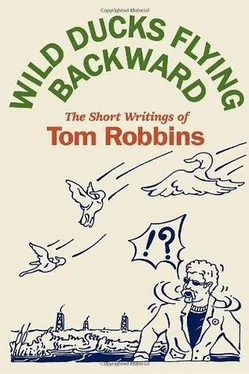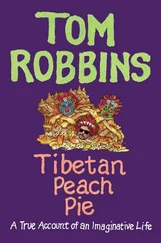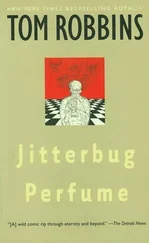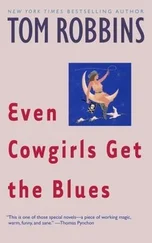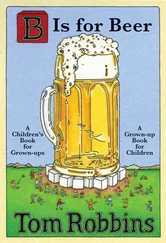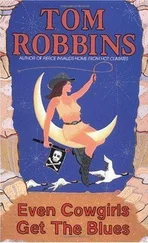Now it’s obvious, is it not, where this picky procuring has been leading? Deep inside the steel bowels of a dreary institution somewhere, I’m about to lay out a half-dozen slices of cloud-fluffy, cloud-white Wonder Bread. Then, using my toothbrush or my index finger in lieu of the forbidden knife, I’ll lather Best Foods onto all six exposed surfaces, careful to spread the eggy ambrosia from edge to edge, crust to crust, because to do otherwise would dishonor the craft of sandwich-making. Rest assured, fellow connoisseurs, an observer would see me blanket the entire slice and blanket it to a most liberal and generous depth.
You might ask, “Tom, is it safe to try this at home?” Well, I can only report that when I, a lifelong consumer of gargantuan amounts of mayonnaise, underwent an angiographic screening in 1999, the attending physicians said I had the arteries of a twelve-year-old boy. (Of course, they didn’t say which twelve-year-old boy. I suppose they could have meant that double-wide porker who squirms and farts in the seat in front of you every time you go to a Saturday matinée.)
In any event, once the divine dressing has been plastered to an agreeably hedonistic expanse and depth, I’ll step back for a moment and admire the sheen of it, the goopy swooze of it, the innocence and decadence and Brigitte Bardot blondeness of it. Alas, however, the great clock is ticking. I’d better proceed to adding the radiant little circles of tomato (round and red as the lenses in a firebug’s spectacles), distributing them sufficiently over three of the heavily mayonnaised planes. That done, I’ll sprinkle on a trace of pepper and a lot of salt (remember, I have clear arteries). Finally, I’ll lay on the roof slices, and with the heel of my hand, apply just enough pressure so that the ingredients adhere to one another, forming a coherent whole; kind of flattened and splayed and fused; spongy to the touch, restful to the eye, inviting to the bite, secure against any untidy loss of contents.
Voilà! That which you now behold, that at which you cannot help but cock a gentle snook, are three newborn examples of one of civilized mankind’s most unassuming yet wondrous concoctions: the pauper king of lunchland, the naïf whose seemingly primitive genius is sadly undervalued by pucky-wucked canapé-snappers and meat-and-potatoes he-men alike; the modest though ever-spunky… TOMATO SANDWICH!
A brave little raft in a sea of culinary confusion; the deuce of hearts turned inside out, wild card in the dog-eared deck of summer dining; pot of rubies at the end of a bleached-out rainbow; the tomato sandwich is soft and voluptuous, sweetish and acidic, sunny, accessible, unashamedly fatty, and deceptively sumptuous.
Comfort food, you say? Granted, it is comforting although not precisely in that “I-miss-my-mommy” sense that, to some, a bowl of good old-fashioned macaroni-and-cheese might be comforting. In fact, few are today’s children who would not squawk like a cartoon duck if you plopped a tomato sandwich on their TV tray. No, the properly made tomato sandwich bespeaks a quality beyond adult regression or childish gratification.
For me — and possibly for you as well — there are special foods capable of literally connecting the tastebuds to the soul; foods of which neither my tongue nor my soul ever tires, even were I to eat them every day of my life. And when it comes to tomato sandwiches, I very nearly have.
So, it is completely appropriate that, with a combination of deep reverence and vigorous gusto, I consume a trio of them while awaiting the shadows that are soon to fall across my barred door.
And now here they are, those righteous authorities, all terse and businesslike, scarcely granting me time to wipe my greasy mouth with my sleeve before ushering me out of the cell and down the piss-green corridor to that clean, well-lighted place where I’m to be legally murdered by the state.
Despite having once again enjoyed, in what are scheduled to be my closing minutes, one of life’s most agreeable pleasures, I will not falsely claim that I am wholly at peace. Even tomato sandwiches have their limitations. They’ve left me satiated but, in my current situation, hardly serene. Yet neither am I defiant. And I’m certainly not resigned.
I’m not resigned because, you see, I have a plan. I’m not resigned because this is my fantasy, after all, and provided it is dramatically correct, I must insist on a happy ending.
Whoa! What’s this? A tremendous explosion has suddenly ripped through the building, throwing me to the floor like a Dear John letter. As debris sifts down upon us, my escorts and I lie there, they stunned, I looking up frantically through the swirling cumulus of dust until I see in the near distance the beckoning lights of dawn.
Bleeding, soiled, lame, I hop through the rubble on one leg, like a flamingo in a sack race. With surprising speed, I’m out into the exercise yard. The guard tower has toppled and in the prison wall there’s a hole so wide you could fit an hour’s worth of corporate greed in it and have room left over for all of Dick Cheney’s draft deferments. Wow! My friends in the Mad Scientists Underground sure know how to orchestrate a jailbreak!
In the deserted street outside the prison walls, Naomi Watts waits in a black Ferrari, its engine revving like a velvet chainsaw. I get in, give Naomi a kiss, she pops the clutch, and off we rocket, barreling down to Mexico at 110 miles an hour. Mexico. Our good neighbor to the south. Mexico, where nowadays sliced bread is widely available, where the lime-flavored mayonnaise is muy bueno, and where the tomatoes — if not harvested prematurely or shampooed in pesticide — are muy damn bueno, indeed.
What Is Art and If We Know What Art Is, What Is Politics?
“Whoever communicates to his brothers in suffering the secret splendor of his dreams acts upon the surrounding society like a solvent, and makes all who understand him, often without their realization, outlaws and rebels.”
— Pierre Quillard
The most useful thing about art is its uselessness.
Have I lost you already? Wait a minute. My point is that there’s a place — an important place, as a matter of fact — in our all too pragmatic world for the impractical and the non-essential, and that art occupies that place more gloriously than does just about anything else; occupies it with such authority and with such inspirational if quixotic results that we find ourselves in the contradictory position of having to concede that the non-essential can be very essential, indeed, if for no other reason than that an environment reduced to essentials is a subhuman environment in which only drones will thrive.
Taking it a step further, perhaps, let’s proclaim that art has no greater enemy than those artists who permit their art to become subservient to socio-political issues or ideals. In so doing, they not only violate art’s fundamental sovereignty, they surrender that independence from function that made it art (as opposed to craft or propaganda) in the first place. At the heart of any genuine aesthetic response are sensations that have no rational application, material or psychological, yet somehow manage to enrich our lives.
The notion that art must be an instrument for discernible social betterment is Calvinistic, and the work that is guided by that premise is fundamentally puritanical, even when its content is sexually explicit.
Obviously, art doesn’t exist in a vacuum. Like a coral animal, it is embedded in a vast undulating reef of economics, politics, religion, entertainment, and social movements of one kind or another. Yet, while we are in art’s thrall, we’re lifted out of mundane context and granted a temporary visa to a less ordinary dimension, where our existential burden is momentarily lifted and we surf a wave of pure perceptual pleasure. And what is art, after all, but a vehicle for the transportation of perceptual (i.e. aesthetic) values?
Читать дальше
